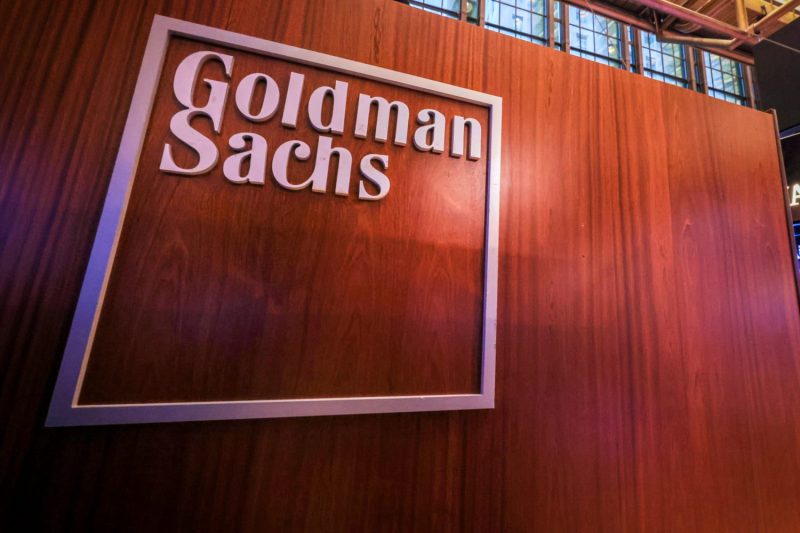
Goldman Sachs rolls out an AI assistant for its employees as artificial intelligence sweeps Wall Street

Goldman Sachs is rolling out a generative AI assistant to its bankers, traders and asset managers, the first stage in the evolution of a program that will eventually take on the traits of a seasoned Goldman employee, according to Chief Information Officer Marco Argenti.
The bank has released a program called GS AI assistant to about 10,000 employees so far, with the goal that all the company’s knowledge workers will have it this year, Argenti told CNBC in an exclusive interview. It will initially help with tasks including summarizing or proofreading emails or translating code from one language to another.
“Think about all the tasks that you might want to complete with regards to a variety of use cases for all those professions that can be now at your fingertips,” Argenti said. The Goldman assistant is a “very simple interface that allows you to have access to the latest and greatest models.”
Goldman’s move means that, along with JPMorgan Chase and Morgan Stanley, the world’s top three investment banks have aggressively released generative AI tools to their workforce, a remarkable development since ChatGPT went viral about two years ago.
Wall Street has embraced generative artificial intelligence faster than any other disruptive technology in recent years, experts say, because of how adept large language models are in replicating aspects of human cognition.
Today it can respond to queries, write emails and summarize lengthy documents, but expectations are high that future versions will exhibit so-called agentic abilities, meaning they can perform multistep tasks with little human intervention.
In speaking with CNBC about his vision for artificial intelligence at the firm, Argenti — who joined from Amazon in 2019 — repeatedly likened the AI program to a new employee that will absorb Goldman culture over the coming years.
Initially, the tool will mostly produce answers based on Goldman data that has been fed into AI models from OpenAI’s ChatGPT, Google’s Gemini and Meta’s Llama, depending on the task, said Argenti. The bank is also looking at models from companies including Anthropic, Mistral and Cohere, he added.
“The AI assistant becomes really like talking to another GS employee,” Argenti said.
“As we progress, the second step is when you’re starting to have this agentic behavior, that is, ‘I’m completing a task on behalf of a Goldman employee, and I need to take a set of steps,’” he said. “That’s where the model is going to start to do things like a Goldman employee, not only say things like a Goldman employee.”
This helps explain why companies have forbid employees from using ChatGPT for work, instead moving to create their own platforms to tap the technology. It allows firms to not only keep their information secure, but to also craft AI platforms that increasingly resemble the best examples of their own workforce.
“For the AI to have a very specific identity that reflects the tenets, the values, the knowledge and the way of thinking of the firm is extremely important,” Argenti said.
In practice, that means that just as an experienced Goldman employee would know to double-check their work with multiple data sources or use a specific algorithm for a calculation, the AI will absorb those lessons, he said.
But Argenti says he is most excited by the prospect of what comes later, in perhaps three to five years, as AI models increasingly blur the lines between human and machine thinking.
This stage of AI at Goldman would have the model “actually reason more and become more like the way a Goldman employee would think,” he said.
So instead of being handed a run book, which is tech industry parlance for a set of step-by-step instructions for completing tasks or responding to incidents, the AI would be able to generate detailed plans “in the way that an experienced Goldman employee would do,” Argenti said.
The prospects of that future — and the fact that Wall Street’s workers are helping train a technology that may make some roles obsolete, while augmenting other jobs and creating new roles altogether — may send a fresh wave of anxiety through employee ranks.
Like at Goldman, other major investment banks are on target to give generative AI tools to their entire workforces in the coming months.
More than 200,000 JPMorgan employees currently have access to in-house generative AI tools, according to a person with knowledge of that bank who declined to be identified speaking about internal matters. Roughly 40,000 Morgan Stanley employees had access to it as of late last year, the bank said in October.
Finance and technology are seen as among the industries where employees are most prone to upheaval because of generative AI, allowing companies to potentially generate billions of dollars in additional profits. Meta CEO Mark Zuckerberg told podcaster Joe Rogan earlier this month that its AI will be capable of writing code as well as mid-level software engineers this year.
Global investment banks may shed as many as 200,000 jobs in the next three to five years as the companies implement AI, according to a report from Bloomberg’s research arm. The report, based on a survey of tech executives at major banks, said that support and operations roles known as the back and middle office were most at risk.
At Goldman, however, the official stance is that AI will empower employees to do more, not necessarily result in the need for fewer humans.
“The importance of having a phenomenal human workforce is actually going to be amplified,” Argenti said.
“In my opinion, it always boils down to people,” he said. “People are going to make a difference, because people are going to be the ones that actually evolve the AI, educate the AI, empower the AI, and then take action.”
